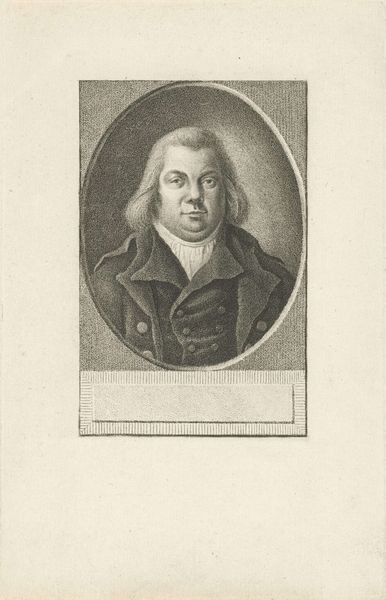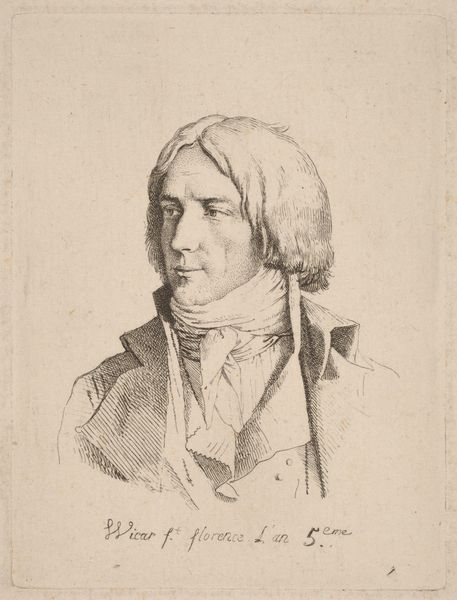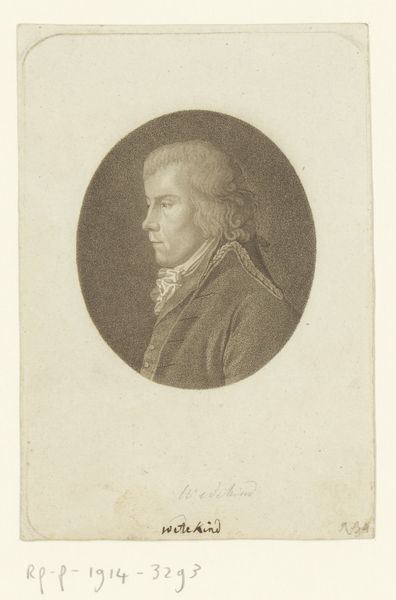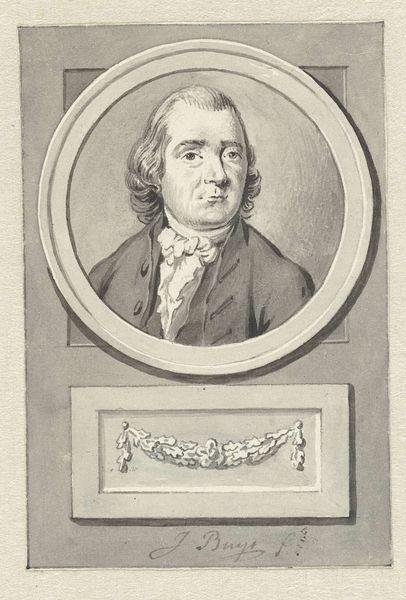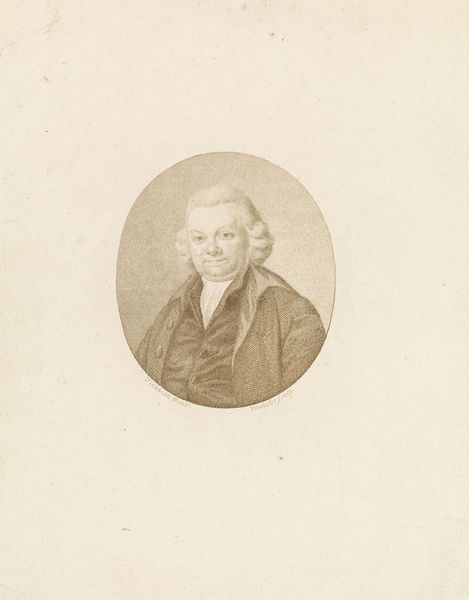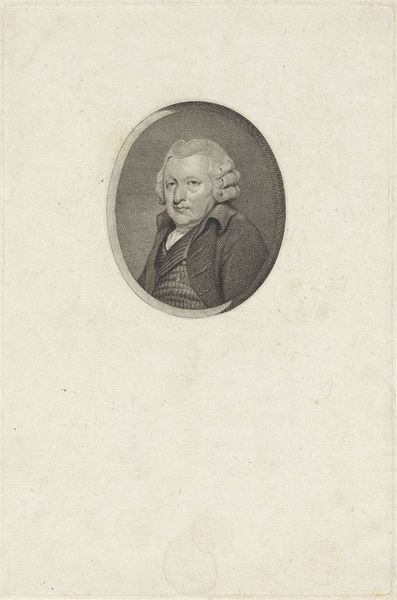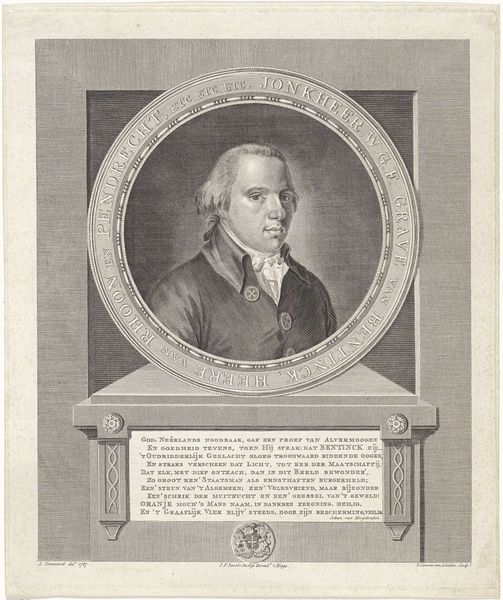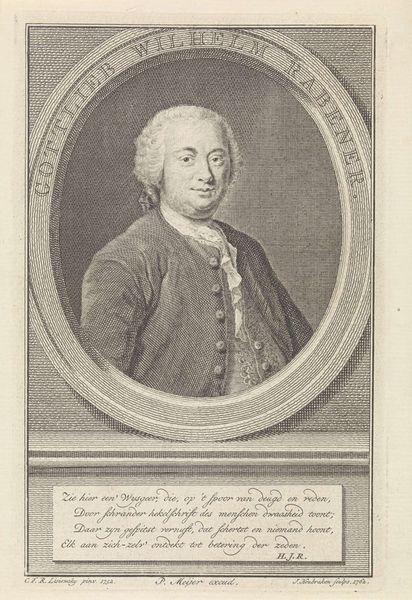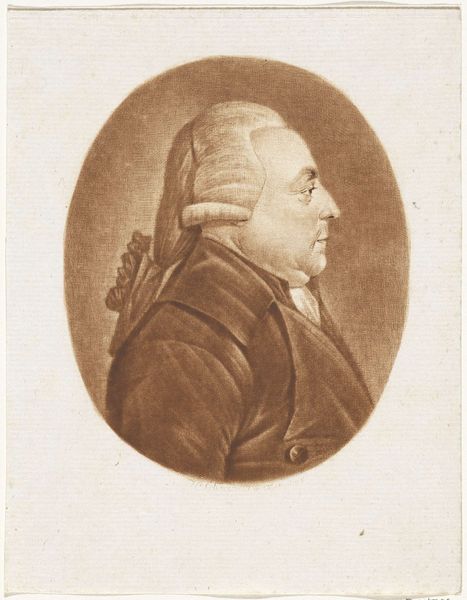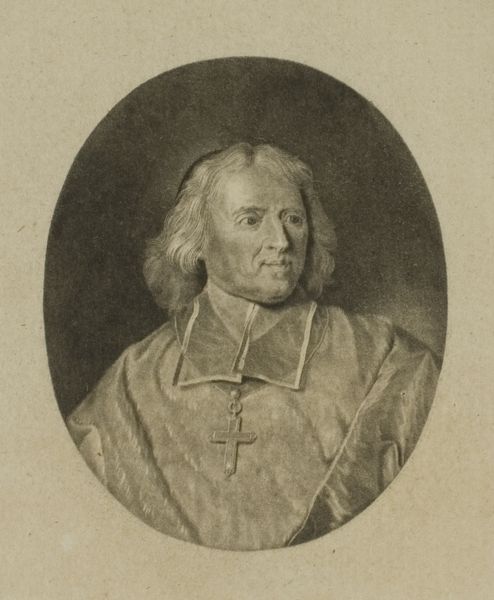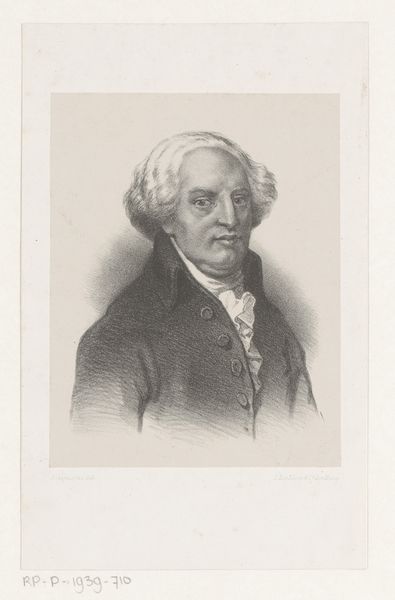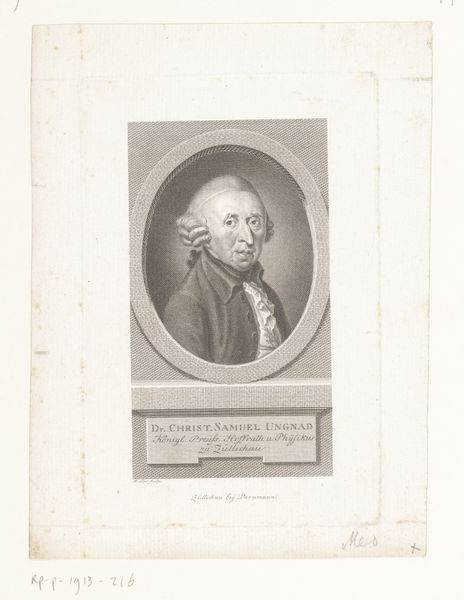
print, engraving
#
portrait
#
neoclacissism
# print
#
portrait reference
#
limited contrast and shading
#
portrait drawing
#
engraving
Dimensions: height 385 mm, width 280 mm
Copyright: Rijks Museum: Open Domain
Curator: I’m struck by the subtle, almost austere quality of this portrait. Editor: That’s Hendrik Schwegman’s print of Johan Arnold Bloys van Treslong, dating back to between 1771 and 1816, currently held at the Rijksmuseum. The material itself, this engraving, speaks volumes about the mode of disseminating images and power during that era. Curator: Exactly! Looking at it through a lens of social history, we can consider the visual language used to portray individuals like Bloys van Treslong. It’s an interesting study in the performance of masculinity and class in the late 18th century. His gaze, his posture – they are all carefully constructed signifiers. Editor: The craft of engraving demands a particular kind of labour. Think about the precise, repetitive gestures to achieve that likeness. How that repetitive process mirrors labor hierarchies that are a key piece of the construction of that period. Curator: Absolutely. And that meticulous detail extends to his clothing – the cut of his jacket, the detailing on the waistcoat. This piece embodies Neoclassical ideals while reminding us that such ideals were accessible primarily to the elite. It becomes an interrogation of whose stories were deemed worthy of preservation and dissemination. Editor: And, the choice of materials, moving beyond painting, creates distance while creating replicability of the image. We see the commodification of portraiture happening in real-time, making it much more accessible beyond paintings in noble houses. Curator: Indeed. Seeing it now through our contemporary lens, it’s hard to ignore the problematic power structures these images upheld, yet equally it helps us to decipher those structures. Editor: Ultimately, analyzing these objects gives me tangible means to approach labor and access of objects and art of that period. Curator: For me, it's an access point to engaging the socio-political narratives and hidden assumptions embedded within representations of power and status during this crucial period in history. Editor: A wonderful place for more critical thought.
Comments
No comments
Be the first to comment and join the conversation on the ultimate creative platform.
